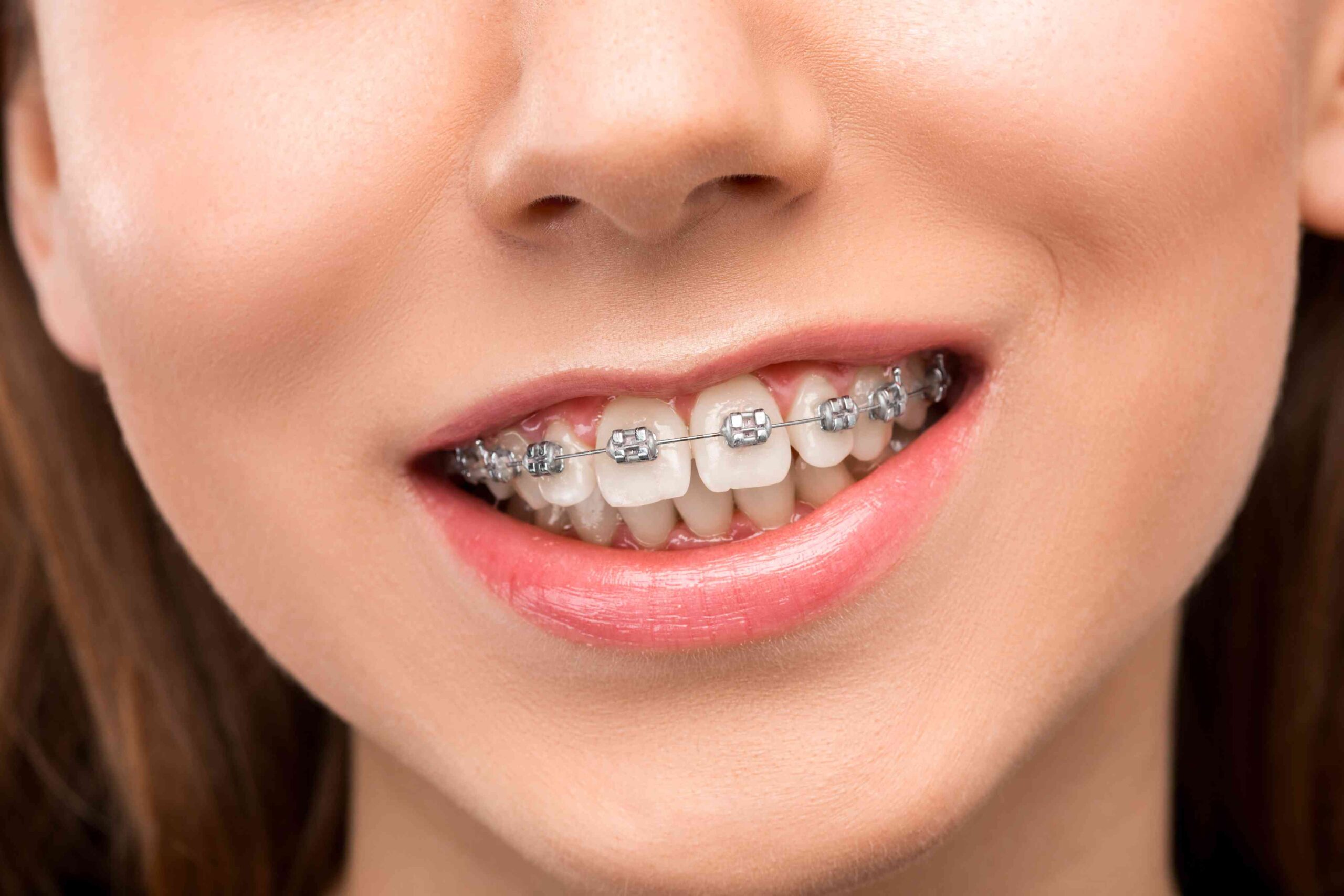Braces and Your Gums: Identifying Early Signs of Recession
Braces are frequently used to straighten teeth and enhance oral hygiene. They can help you have a straight, beautiful smile, but they can also damage your gums. Gum recession, in which the gums recede and reveal more of the tooth or its root, is one potential issue. For every person wearing braces, it’s critical to recognize the early warning indicators of gum recession. This page describes the relationship between gum recession and braces, early warning signals to watch out for, and oral hygiene tips to maintain healthy gums throughout orthodontic treatment.
Knowing About Gum Recession
When the tissue around your teeth recedes or wears out, more of the tooth or its root is exposed, a condition known as gum recession. This may leave spaces open to the growth of dangerous microorganisms. It can harm the bones and tissues that support your teeth if left untreated, which might result in tooth loss.
Gum Recession Causes
Several things can cause gum recession, including:
- Bad Dental Hygiene: Inadequate brushing and flossing can result in plaque accumulation, which can induce recession of the gums and gum disease.
- Genetics: Due to their genetic makeup, certain persons are predisposed to recession and gum disease.
- Hormonal Changes: Gums may become more sensitive and prone to recession as a result of hormonal changes that occur during puberty, pregnancy, or menopause.
- Use of Tobacco: Chewing or smoking tobacco can lead to recession and damage to the gums.
- Bruxism: Excessive stress on the gums caused by clenching or grinding teeth can result in recession.
- Misaligned Teeth or Bite: Imbalanced pressure from misaligned teeth can cause recession by affecting the gums and bones.
- Aggressive Brushing: Gums can be harmed and made to retreat if you use a toothbrush with strong bristles or brush too firmly.
The Connection Between Gum Recession and Braces
Gum recession can occasionally be exacerbated by braces. In order to bring the teeth into position, they exert constant pressure, which may irritate and inflame the gums. Additionally, food and plaque can become lodged in the brackets and wires of braces, increasing the risk of gum disease and making it more difficult to maintain clean teeth.
First Indices of a Gum Recession
Early detection of gum recession can avert more significant problems. Watch out for:
- Tooth Sensitivity: Increased susceptibility to acidic, sweet, spicy, or cold meals and beverages. Due to a decrease in protecting enamel, exposed roots experience this.
- Visible Root Exposure: Gum recession is indicated if more of your tooth is visible or if the roots are visible.
- Teeth that Appear Longer: Teeth that appear longer than usual may be a sign of receding gums.
- Notches at the Gum Line: Minor depressions or dents where the gum line and tooth meet may indicate recession.
- Gums that are swollen, red, or bleeding: Gum disease, which can cause recession, might be indicated by gum disease that persists and becomes more noticeable, especially after brushing or flossing.
- Teeth that are loose: In severe situations, the loss of supporting bone and tissue can cause teeth to come free.
Keeping Your Gums Healthy with Braces
Maintain proper dental hygiene and schedule routine checkups with your dentist to avoid gum recession while wearing braces. Here are some pointers:
Brush correctly: Brush your teeth and gums twice a day using a soft-bristled toothbrush and fluoride toothpaste. Because they can be more effective at eliminating plaque, think about using an electric toothbrush.
- Floss Every Day: Despite the difficulty of flossing when wearing braces, it is essential to get rid of food particles and plaque from in between teeth and around brackets. To make it easier, use orthodontic floss or floss threaders.
- Use an Antimicrobial Mouthwash: A mouthwash that fights germs and plaque will help lessen gum disease-causing gum disease.
- Frequent Dental Visits: Make an appointment for routine cleanings and examinations with your orthodontist and dentist. They may keep an eye on the condition of your gums and provide you expert cleanings to get rid of tartar and plaque.
- Healthy Diet: To promote gum health, eat a well-balanced diet high in vitamins and minerals. Steer clear of acidic and sugary meals and beverages since these might cause plaque accumulation.
- Give Up Tobacco: Giving up tobacco usage or smoking can significantly enhance gum health and lower the chance of recession.
- Orthodontic Wax: To prevent irritation and inflammation to your gums, cover any brackets and wires with orthodontic wax.
Therapy for Dental Recession
In the event that you see early indications of gum recession, get in-office dental care. Options for treatment consist of:
- Deep Cleaning (Scaling and Root Planing): To encourage the gums to reattach to the tooth, this treatment smoothes the surfaces of the roots and removes plaque and tartar from below the gum line.
- Gum Grafting: In more serious situations, a gum transplant can be required. The purpose of this procedure is to cover exposed roots and encourage gum regeneration by joining tissue from another location of your mouth, or utilizing donor tissue.
- Orthodontic Adjustments: Using a new orthodontic device or modifying the braces can occasionally assist relieve gum pressure and minimize the chance of recession.
- Topical Antibiotics: In order to lessen inflammation and infection in the afflicted region, your dentist may recommend topical antibiotics.
In summary
People using braces may be concerned about gum recession. Early detection of the symptoms and proactive gum health maintenance can avert major problems and guarantee a positive outcome. Long after your braces are taken off, you may maintain a beautiful, healthy smile by practicing proper oral hygiene, going to regular dental checkups, and getting expert care when needed. Take careful care of your gums during your orthodontic treatment since they are essential to your overall dental health.





 |
|